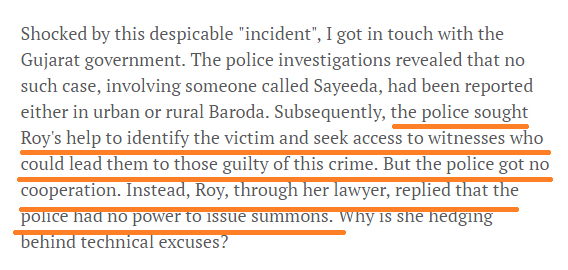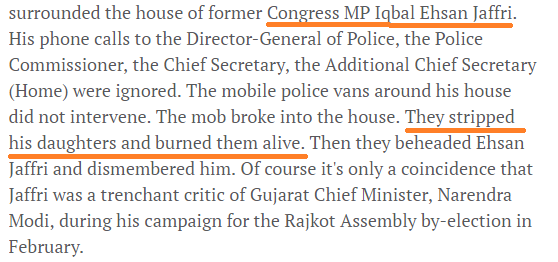The Modi government has completed three years in office on 26 May. In these three years, Narendra Modi-led NDA government took several landmark policy initiatives that have lifted the mood of the nation which had witnessed ten years of policy paralysis under the Congress-led UPA.
An imprint of Modi’s sheet anchor for governance – ‘Sabka Saath, Sabka Vikas‘ (Together with all, development for all) and ‘Minimum Government and Maximum Governance’ — are seen in these policy initiatives. The following are the list of 10 big policy initiates that the Modi government implemented in the last three years.
- GST: Of all the policy initiatives taken by the Modi government, the Goods and Services Tax is the most transformative and impactful. GST, the biggest tax reform since Independence, aims at making India a common market with common tax rates. The GST Council, comprising of state finance ministers and headed by the Union Finance Minister, has finalised a four-slab structure – 5 per cent, 12 per cent, 18 per cent and 28 per cent. The lowest slab of 5 per cent is meant for the items of common consumption, there would be two standard rates of 12 per cent and 18 per cent for fast-moving consumer goods and the highest slab of 28 per cent is meant for luxury goods. The GST is scheduled for a 1st July roll out.
- Make in India: Another major policy initiative undertaken by the Modi government is Make in India. This aims at making India a global manufacturing hub. Make in India initiative encourages both multinational as well as domestic companies to manufacture their products in India. It targets 25 sectors of the economy ranging from manufacturing, infrastructure , automobile to Information Technology (IT) and Business Process Management (BPM). The initiative seeks to drive foreign direct investment, facilitate job creation, foster innovation, enhance skill development, build best-in-class manufacturing infrastructure and protect intellectual property. ‘Make in India’ has changed the way the Government interacts with industry for the economic development of the country.
- Skill India: This wants to make India a skilled country. Under the scheme, the government has set the target of providing skill development training to over 500 million youth by the year 2022. The scheme includes four initiatives –National Skill Development Mission, National Policy for Skill Development and Entrepreneurship, Pradhan Mantri Kaushal Vikas Yojana (PMKVY) and Skill Loan scheme. The National Skill Development Mission consists of a three-tier structure – a Governing Council for policy guidance chaired by the Prime Minister, a Steering Committee and a Mission Directorate. The National Skill Development Mission was developed to create convergence across sectors and states in terms of skill training activities. The National Policy for Skill Development and Entrepreneurship is the country’s first integrated national policy for developing skills and promoting innovation-based entrepreneurship on a large scale. PMKVY incentivises skill training by providing financial rewards to candidates who successfully complete approved skill training programmes. Under the Skill Loan scheme, loans ranging from Rs 5,000 to Rs 1.5 lakh are made available to 34 lakh youth seeking to attend skill development programmes.
- Digital India: The flagship Digital India programme aims at transforming India into a digitally empowered society and knowledge economy by bringing in digital infrastructure, creating digital empowerment and delivering governance and services through digital means. Digital India has drawn investments to the tune of Rs 4.5 lakh crore in the technology space. It claims to create 18 lakh jobs.
- Start-up India, Stand-up India: The scheme was launched to give a boost to entrepreneurship and job creation. The policy initiative promotes bank financing for start-up ventures. The government has increased the overall age limit for start-ups from five years to seven years and 10 years for biotechnology firms. In a block of seven years, eligible start-ups can avail income tax exemption for three years.
- Pradhan Mantri Jan-Dhan Yojana (PMJDY): Pradhan Mantri Jan-Dhan Yojana is national mission for financial inclusion which aims at providing banking services to each and every household of the country. The mission also envisages extension of Direct Benefit Transfer (DBT) under various government schemes through bank accounts of the recipients. The scheme offers free zero-balance bank account with a debit card, a Rs 1 lakh accident insurance policy and Rs 30,000 free medical insurance cover for the poor. The Jan Dhan Yojana has made it to the Guinness Book of World Records.
- Pradhan Mantri Mudra Yojana (PMMY): Under the scheme, the government provides funds to Micro-Finance Institutions (MFIs). The scheme provides loans ranging from Rs 50,000 to Rs 10 lakh to the MFIs. The government has set up a new institution called Micro Units Development and Refinance Agency (MUDRA) Bank which acts as a regulator for the purpose. The bank, set up with a corpus of Rs 20,000 crore, caters to 5.77 crore small business units that are spread all across India. The MUDRA Bank nurtures small businesses through three stages of growth –Shishu, Kishor and Tarun. Under the Shishu, Kishore and Tarun schemes, the MUDRA bank allows loans up Rs 50,000, Rs 50,000 to Rs 5 lakh and Rs 5 lakh to Rs 10 lakh respectively. It could be noted that under the Pradhan Mantri Mudra Yojana, more than 7.45 crore small entrepreneurs received loans worth around Rs 3.17 lakh crore. Of this, 70 per cent of the beneficiaries are women.
- Aadhar: Aadhaar is a 12 digit unique-identity number issued to the Indian residents based on their biometric and demographic data. The data is collected by the Unique Identification Authority of India (UIDAI) under the Ministry of Electronics and Information Technology. With over 1.133 billion enrolled members as of 31 March, 2017, Aadhaar is the world’s largest biometric ID system.
- Ujjwala and PaHaL: Pradhan Mantri Ujjwala Yojana is an ambitious social welfare scheme which aims to provide five crore LPG connections to women from BPL households. So far more than 2 crore women from BPL families have received LPG connections under the scheme. The scheme stresses on safeguarding the health of women and children by providing them with clean cooking fuel. PaHaL is a direct benefit transfer scheme for LPG subsidy to BPL families. The scheme aims at providing LPG subsidy to 14.62 crore BPL households. PaHaL scheme has been acknowledged by the Guinness Book of World Records for being the largest cash transfer program.
- UDAY: Ujwal DISCOM Assurance Yojna is a path breaking reform initiative aims at realising Prime Minister Narendra Modi’s vision for affordable and accessible Power for All by reforming the power sector. The scheme provides a revival package for electricity distribution companies (DISCOMs) with an intent to rescue them from the mounting debt and massive losses. The scheme allows the state governments to take over 75 per cent of the debt of their respective discoms. The state governments then issue ‘UDAY bonds’ to banks and other financial institutions to raise money. The DISCOMS are expected to issue bonds for the remaining 25 per cent of their debt. UDAY is a shining example of cooperative and competitive federalism. Till now 29 states and Union Teritories have joined the scheme which is optional for the states to join. The performances of several DISCOMS have seen a drastic improvement since they signed up for UDAY. According to reports, UDAY has saved a whopping Rs 7,900cr for DISCOMS in FY17.















